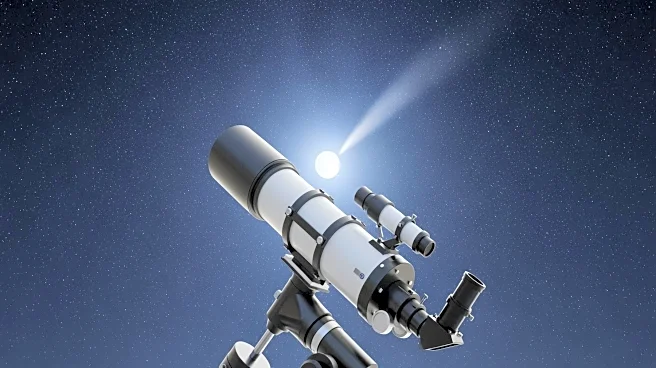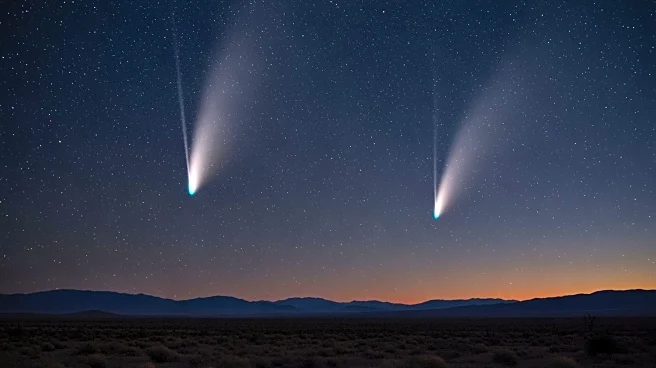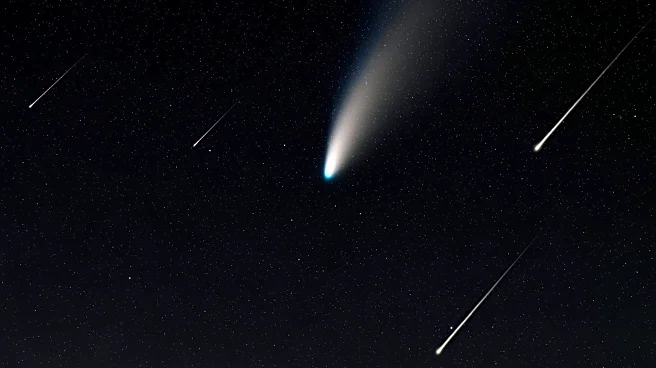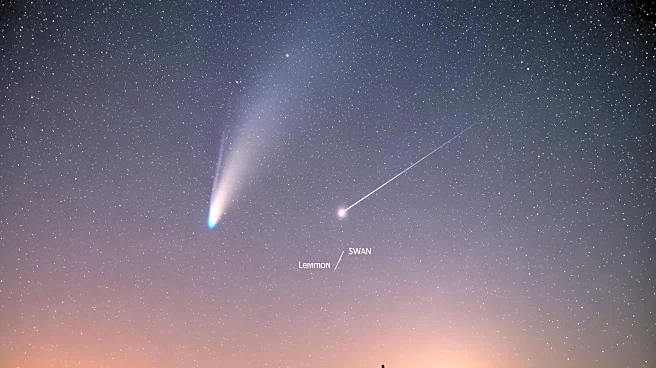What's Happening?
Sky & Telescope provides a detailed overview of celestial events occurring from October 24 to November 2, 2025. Comets Lemmon and SWAN are visible in the evening sky, although they have likely passed their peak brightness. Comet SWAN is positioned in southern
Aquila, moving into western Aquarius, while Comet Lemmon is traversing Serpens Caput. The publication also highlights the visibility of the crescent Moon near Antares and the waxing crescent Moon's position relative to the Sagittarius Teapot. Additionally, the article discusses the 'Summer Triangle Effect,' where stars like Deneb and Vega appear near the zenith due to earlier sunset times in autumn. Other notable events include the occultation of Tau Sagittarii by the Moon and the visibility of planets such as Mercury, Venus, Mars, Jupiter, Saturn, Uranus, and Neptune.
Why It's Important?
These celestial events offer stargazers and amateur astronomers unique opportunities to observe and study the night sky. The visibility of comets and the positioning of the Moon relative to constellations provide educational moments for those interested in astronomy. The 'Summer Triangle Effect' illustrates how seasonal changes impact star visibility, enhancing understanding of celestial mechanics. Observing planets like Jupiter and Saturn can deepen appreciation for planetary motion and alignments. These events also serve as a reminder of the vastness and complexity of the universe, encouraging public interest in astronomy and science.
What's Next?
As daylight-saving time ends on November 1, stargazers will experience earlier nightfall, potentially improving visibility of celestial objects. The waxing gibbous Moon will continue to move closer to Saturn, offering further observation opportunities. The publication encourages readers to use star charts and telescopes to enhance their viewing experience. Upcoming celestial events will continue to provide educational and observational opportunities for astronomy enthusiasts. The article suggests using resources like the Pocket Sky Atlas and deep-sky guidebooks to explore the night sky more effectively.
Beyond the Headlines
The article touches on the philosophical aspect of astronomy, highlighting the difference between external reality and human perception. This underscores the importance of clear thinking and scientific inquiry in understanding the universe. The publication also emphasizes the value of learning to navigate the sky using star maps, fostering a deeper connection with the cosmos. The discussion of computerized telescopes versus traditional methods reflects ongoing debates in the astronomy community about technology's role in stargazing.













